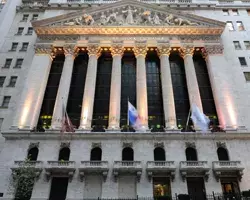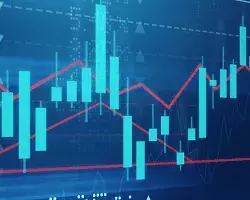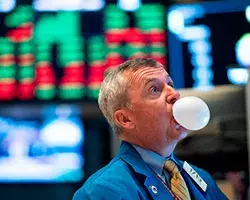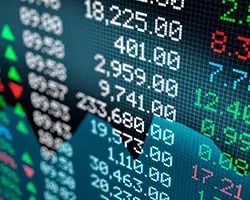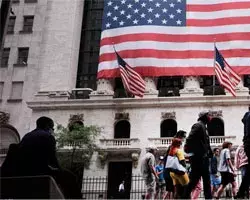US Stocks Close Lower Amid Debt Ceiling Vote and Rate Hike Concerns, Labor Market Shows Strength | Daily Market Analysis
Key events:
New York Stock Exchange (NYSE): Defined & Explained
The New York Stock Exchange (NYSE) appeared 231 years ago, immediately changed the US market, and became the largest marketplace for buying and selling assets in the world. Nicknamed the BigBoard, it guides all market participants. Global traders monitor the NYSE on a daily basis as it affects subsequent European and Asian exchange operations. The global economic ups and downs of the last 100 years also begin in New York. In this article, you will find out how the NYSE evolved and why everyone is watching it now.
Markets Await Rate Decision As Inflation Concerns Persist Despite Manufacturing Contraction | Daily Market Analysis
Key events: Australia - RBA Interest Rate Decision (May) Australia - RBA Rate Statement UK - Manufacturing PMI (Apr) Eurozone - CPI (YoY) (Apr) USA - JOLTs Job Openings (Mar) US markets ended the first day of May mostly unchanged as European markets were closed. However, the Nasdaq 100 had its best monthly close in a year, and the S&P 500 almost reached its highest point for the year.
Standard & Poor's Rating: What It Shows and Why Investors Need It
Credit ratings help investors categorize issuers of stocks, bonds, or entire nations by their level of debt risk. Depending on the level of credit rating assigned, you can understand the level of credit risk. Ratings are issued by rating agencies that have different rating systems. One such agency is Standard & Poor's. Today we will learn more about it, including its importance for investors and traders.
Japan's Inflation Hits 41-Year High, U.S. Treasury Yields Decline, and PCE Inflation Report Looms | Daily Market Analysis
Key events: USA – Core PCE Price Index (MoM) (Jan) USA – New Home Sales (Jan) The latest GDP data from the U.S. showed that the U.S. economy grew 2.7% in Q4, not 2.9% as analysts had anticipated. Softer economic growth might have helped ease inflation and softened the Fed's hand. That didn't happen, however, as the GDP Price Index, another measure of inflation that was released along with the GDP data, showed that inflation fell in Q4, but fell much less than expected, fully reflecting the CPI and PPI data released last week.
Is There Any Logic Behind Optimism in the US Stock Market? | Daily Market Analysis
Key events: New Zealand – RBNZ Interest Rate Decision New Zealand – RBNZ Rate Statement New Zealand – RBNZ Press Conference USA – FOMC Meeting Minutes First of all, there are enough reasons for optimism in the market, and each of them is quite convincing. China is lifting the quarantine measures imposed because of the coronavirus. This leads to improvements in supply chains and reduces pro-inflation risks.
Markets Await US Inflation Data and the Start of the Earnings Season | Daily Market Analysis
Key events:
NFP Beats Forecasts Suggesting Overly Optimistic Sentiment | Daily Market Analysis
Key events: UK - Composite PMI (Nov) UK - Services PMI (Nov) USA - ISM Non-Manufacturing PMI (Nov)
Will There Be Any Surprises From NFP? | Daily Market Analysis
Key events: USA – Nonfarm Payrolls (Nov) USA – Unemployment Rate (Nov) Canada – Employment Change (Nov) European markets got off to a moderately positive start to the month, hitting 6-month highs, but then pulled back by the close, with the FTSE100 lagging behind, failing to break out the 7,600 level.
A Slowdown in U.S. Inflation Causes a Rally in the Stock Market | Daily Market Analysis
Key events: UK – GDP (MoM) UK – GDP (YoY) (Q3) UK – GDP (QoQ) (Q3) UK – Manufacturing Production (MoM) (Sep) UK – Monthly GDP 3M/3M Change U.S. stock indices rose strongly in the first half of trading Thursday. A positive driver was the inflation data. In addition, the reporting season is nearing its end. According to the congressional election results, the Republicans are in the majority and this threatens with difficulties to coordinate the bills with the White House – Joe Biden is a Democrat.

